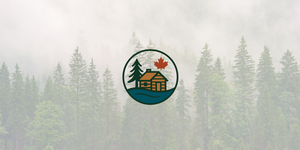You're hiking a trail near your cabin when you spot them: dark, clustered berries that look just like blackberries. Your city-dwelling friend freezes. "Don't eat those – they could be poisonous!"
Here's the thing: they're almost certainly not.
Across Canada, every aggregate berry that resembles a blackberry – distinctive clustered fruits made up of tiny drupelets – is not only safe to eat but likely delicious.
From east to west, our forests and meadows offer a buffet of these vitamin-packed treats that Indigenous peoples have harvested for thousands of years.
The Blackberry Family Rule

When foraging experts talk about "safe bets" in wild edibles, blackberry-lookalikes top the list. These aggregate berries - botanically called "drupes" - all belong to the Rubus genus, and North America doesn't have any toxic members in this family.
"If it looks like a blackberry or raspberry, it's edible," says the old foraging adage. And unlike many folk wisdom claims, this one holds up to scientific scrutiny.
Canada's Blackberry Bounty
Wild Blackberries (Rubus allegheniensis)
Found from Ontario eastward, these thorny shrubs produce the classic blackberry you're picturing. Peak season runs from late July through August. Look for them along sunny forest edges and abandoned fields.

Dewberries (Rubus pubescens)
The ground-hugging cousin grows across Canada from British Columbia to Newfoundland. Smaller and often redder than blackberries, they ripen earlier (June-July) and have a more intense, tart flavor. No thorns make these a kid-friendly find.

Salmonberries (Rubus spectabilis)
BC's coastal gift ranges from golden yellow to deep red. Despite the name, they look like elongated raspberries. Find them in shaded coastal forests from May through July. Their mild, slightly sweet taste improves after a good rain.

Thimbleberries (Rubus parviflorus)
These velvet-leafed shrubs produce soft, cap-shaped berries from Ontario to BC. Bright red when ripe (July-August), they're incredibly fragile – eat them where you find them. The taste? Like a raspberry crossed with rhubarb.

Cloudberries (Rubus chamaemorus)
The Arctic's golden treasure grows in northern bogs from Manitoba eastward. These amber berries (July-August) taste like baked apple with honey. In Newfoundland, they're called "bakeapples" and inspire fierce territorial protection of secret patches.

The Lookalike You Should Skip

There's one aggregate berry that breaks the "all safe" rule: white baneberry (Actaea pachypoda). But to be fair, it doesn't actually look like a blackberry.
The berries are white with a distinctive black dot (giving them the nickname "doll's eyes"), grow on thin red stalks, and form loose clusters rather than tight aggregates. If you mistake this for a blackberry, you probably shouldn't be foraging unsupervised.
Trust Your Instincts

Safety First
While Rubus berries are generally safe, remember: never eat any wild berry unless you're 100% certain of identification. Even with edible berries, start with small amounts to test for allergic reactions before consuming more.
That nervous friend who warned against eating any wild berries? They're suffering from a disconnect from food sources that previous generations took for granted.
Your grandmother who made wild blackberry pie every August had it right. These berries sustained Indigenous peoples for millennia and settlers for centuries.
So next time you spot those familiar clustered berries on your cabin property or hiking trail, take a taste of Canada's wild bounty.
Just save some for the bears.






Join the Conversation